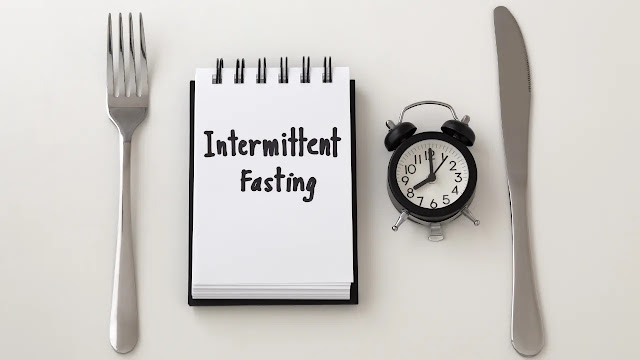The Ultimate Guide to Intermittent Fasting for Weight Loss
From its benefits, types, how to get started, and how to overcome challenges that may come with it. We'll also share success stories from people who have tried this weight loss strategy, so you know it's achievable.
Understanding Intermittent Fasting
What is Intermittent Fasting?
Intermittent fasting is a method of weight loss that involves restricting the amount of food you eat by setting specific periods of time when you can eat and periods where you cannot. The idea is to create a caloric deficit by eating less in a specific timeframe.
There are different types of intermittent fasting, including the 16/8 method, the 5:2 diet, and alternate-day fasting. The 16/8 method involves eating within an 8-hour window and fasting for the remaining 16 hours. The 5:2 diet involves eating normally for 5 days and restricting calories to 500-600 for 2 days. Alternate-day fasting involves fasting every other day.
The Science Behind Intermittent Fasting
When you fast, your body starts to break down stored fat to use as energy. This process is known as ketosis, and it is the reason why intermittent fasting is so effective for weight loss. When you eat, your body uses the calories you consume as energy. But when you fast, your body uses up its reserves, which include fat. This means that you burn fat while fasting, which leads to weight loss.
Intermittent fasting has also been shown to increase levels of human growth hormone (HGH), which can help preserve lean muscle mass and promote fat loss. Additionally, it can improve insulin sensitivity, which is important for blood sugar control and reducing the risk of type 2 diabetes.
Benefits of Intermittent Fasting
Intermittent fasting has a variety of benefits beyond just weight loss. It has been shown to improve blood sugar control, reduce inflammation, and increase longevity. Additionally, it may help reduce the risk of chronic diseases such as heart disease and type 2 diabetes.
Intermittent fasting has also been shown to have cognitive benefits, such as improving brain function and reducing the risk of neurodegenerative diseases like Alzheimer's and Parkinson's. It can also improve sleep quality and reduce stress levels.
However, it is important to note that intermittent fasting is not suitable for everyone. It may not be appropriate for pregnant or breastfeeding women, people with a history of disordered eating, or those with certain medical conditions. It is always best to consult with a healthcare professional before starting any new diet or exercise regimen.
Different Types of Intermittent Fasting
Intermittent fasting has become a popular trend in the health and fitness world. It involves alternating periods of fasting and eating, with the goal of improving overall health and promoting weight loss. There are several different types of intermittent fasting, each with its own unique approach.
The 16/8 Method
The 16/8 method, also known as the Leangains method, involves fasting for 16 hours and then eating during the remaining 8 hours of the day. This method is easy to follow, as it doesn't require any specific foods or calorie counting. It's also the most common method of intermittent fasting. During the fasting period, dieters can consume zero-calorie drinks such as water, coffee, or tea. This method has been shown to improve insulin sensitivity and promote weight loss.
The 5:2 Diet
The 5:2 diet involves eating normally for five days of the week and reducing calorie intake to 500-600 for two days. These two days don't have to be consecutive, and it's recommended to spread them out throughout the week. This method is more flexible than others, as it allows for some calorie intake on fasting days. It has been shown to improve blood sugar levels and reduce inflammation.
Eat-Stop-Eat
Eat-Stop-Eat involves fasting for 24 hours once or twice a week. For example, you would eat dinner one day and then not eat again until dinner the following day. During the fast, you can consume zero-calorie drinks such as water, coffee, or tea. This method can be challenging for some, as it involves a full day of fasting. However, it has been shown to improve insulin sensitivity and promote weight loss.
The Warrior Diet
The Warrior Diet involves eating one large meal at night and fasting during the day. Dieters consume small amounts of fruits and vegetables throughout the day. The idea behind this method is to eat the way our ancestors did during ancient times when food was limited. This method can be challenging for some, as it involves a long period of fasting during the day. However, it has been shown to improve insulin sensitivity and promote weight loss.
Alternate-Day Fasting
Alternate-Day Fasting involves eating normally every other day and either fasting or consuming fewer than 500 calories on the remaining days. This is one of the most challenging methods of intermittent fasting, but it can be effective for weight loss. This method has been shown to improve blood sugar levels and reduce inflammation.
It's important to note that intermittent fasting may not be suitable for everyone. It's important to consult with a healthcare professional before starting any new diet or exercise regimen.
How to Get Started with Intermittent Fasting
Intermittent fasting has become a popular trend in recent years and for good reason. Studies have shown that intermittent fasting can improve metabolic health, promote weight loss, and even increase lifespan. If you're interested in trying intermittent fasting, here are some tips to help you get started.
Choosing the Right Fasting Method for You
There are many different methods of intermittent fasting, but the most important thing is to choose a method that works for your lifestyle. Some popular methods include the 16/8 method, where you fast for 16 hours and eat during an 8-hour window, and the 5:2 method, where you eat normally for 5 days and restrict calories to 500-600 for 2 non-consecutive days. Consider your work schedule, meal preferences, and family obligations when choosing your fasting method.
Setting Realistic Goals
Before beginning intermittent fasting, it's essential to set realistic goals. You don't have to start with long fasting periods right away. Instead, start with short fasts and work your way up as you get used to the fasting lifestyle. For example, try starting with a 12-hour fast and gradually increasing it to 14 or 16 hours.
It's also important to set realistic weight loss goals. While intermittent fasting can help with weight loss, it's not a magic solution. Aim for a gradual and sustainable weight loss of 1-2 pounds per week.
Preparing Your Body for Fasting
If you're new to fasting, it's essential to prepare your body for the change. Start by gradually reducing the amount of food you eat each day. This will make the transition to fasting easier. You can also try eating more nutrient-dense foods, such as fruits, vegetables, and lean proteins, to help your body adjust to the change.
It's also important to stay hydrated during the fasting period. Drink plenty of water and other non-caloric beverages, such as herbal tea or black coffee, to help you feel full and energized.
Tips for a Successful Fast
To make your fast successful, it's important to stay hydrated and consume enough calories during the eating periods. This will help you avoid feeling weak or dizzy during the fast. Additionally, you should focus on consuming nutrient-dense foods during the eating periods to ensure that your body gets all the necessary nutrients.
It's also important to listen to your body. If you're feeling weak or dizzy during the fast, it's okay to break the fast and eat something. Don't push yourself too hard, especially when you're just starting out.
Finally, be patient with yourself. Intermittent fasting is a lifestyle change, and it may take some time to adjust. Don't get discouraged if you slip up or don't see immediate results. Stick with it, and you'll soon start to see the benefits of intermittent fasting.
Combining Intermittent Fasting with a Healthy Diet
Importance of a Balanced Diet
Intermittent fasting has become increasingly popular in recent years as a weight loss strategy. However, it's important to remember that a healthy diet is just as crucial when it comes to maintaining overall health. While intermittent fasting can help you lose weight, it's essential to combine it with a healthy diet to ensure that you get all the necessary nutrients.
A balanced diet should include plenty of vegetables, fruits, and lean protein sources. These foods provide the body with essential vitamins, minerals, and nutrients needed for optimal health. Additionally, consuming a balanced diet can help to reduce the risk of chronic diseases such as heart disease, diabetes, and certain types of cancer.
Foods to Eat and Avoid While Fasting
During fasting periods, it's recommended to consume foods that are low in calories and high in nutritional value. Examples of such foods include leafy greens, berries, and lean protein sources like chicken, fish, and tofu. These foods can help to keep you feeling full and satisfied while also providing your body with the nutrients it needs.
On the other hand, it's important to avoid processed foods, sugary drinks, and high-calorie snacks during this period. These foods can cause blood sugar levels to spike, which can lead to cravings and overeating later on. Instead, try to focus on whole, nutrient-dense foods that will keep you feeling energized and satisfied throughout the day.
Meal Planning and Preparation
Meal planning and preparation are essential when combining intermittent fasting with a healthy diet. Planning your meals in advance can help you to stay on track and avoid making unhealthy food choices during eating periods. Additionally, having healthy snacks on hand can prevent overeating during eating periods.
When planning your meals, try to include a variety of different foods to ensure that you're getting all the nutrients your body needs. This can include a mix of vegetables, fruits, whole grains, and lean protein sources. Experiment with different recipes and flavors to keep things interesting and prevent boredom.
Overall, combining intermittent fasting with a healthy diet can be an effective way to lose weight and improve overall health. By focusing on whole, nutrient-dense foods and planning your meals in advance, you can ensure that you're getting all the nutrients your body needs while also achieving your weight loss goals.
Exercising While Fasting
Fasting has become a popular way to lose weight and improve overall health. While many people associate fasting with abstaining from food and drink, some individuals choose to exercise during their fasting periods. Exercising while fasting can provide numerous benefits, but it's important to do so safely and effectively.
Benefits of Exercise During Fasting
Exercising during fasting can help increase weight loss, improve insulin sensitivity, and reduce inflammation. When your body is in a fasted state, it burns stored fat for energy instead of relying on the glucose from food. By adding exercise to the mix, you can further increase your body's fat-burning capabilities and enhance weight loss.
Exercise also improves insulin sensitivity, which is the body's ability to use insulin to transport glucose from the bloodstream to the cells. This is important because insulin resistance is a risk factor for many chronic diseases, including type 2 diabetes and heart disease.
Furthermore, fasting and exercise both have anti-inflammatory effects on the body. Inflammation is a natural response to injury or infection, but chronic inflammation can contribute to the development of many diseases. By reducing inflammation, fasting, and exercise can help improve overall health and prevent chronic disease.
Additionally, exercising can help reduce hunger pangs and make fasting periods more bearable. When you exercise, your body releases endorphins, which are natural painkillers and mood boosters. This can help you feel more energized and less hungry during fasting periods.
Best Types of Exercise for Fasting
Low-intensity exercises such as walking, yoga, and light strength training are ideal during fasting periods. These types of exercises are gentle on the body and won't deplete your energy levels too much. Save high-intensity exercises for the eating periods when you have more energy.
It's also important to choose exercises that you enjoy and that fit into your lifestyle. If you're not a fan of yoga, try going for a leisurely walk in the park instead. The key is to find an exercise routine that you can stick to long-term.
Tips for Exercising Safely While Fasting
It's important to listen to your body when exercising during fasting periods. If you feel lightheaded, dizzy, or nauseous, stop exercising immediately and rest. Stay hydrated by drinking plenty of water before, during, and after exercise. You may also want to consider taking electrolyte supplements to replenish your body's stores.
Take breaks when necessary and don't push yourself too hard. Remember, the goal of exercising during fasting is to enhance weight loss and improve overall health, not to push your body to its limits.
Finally, if you have any underlying health conditions or concerns, it's always a good idea to consult with your healthcare provider before starting a new exercise routine or fasting regimen.
Common Challenges and How to Overcome Them
Intermittent fasting is a popular weight loss strategy that involves cycling between periods of eating and fasting. While it can be an effective way to lose weight and improve overall health, it can also present some challenges. Here are some common challenges and how to overcome them:
Dealing with Hunger
One of the biggest challenges of intermittent fasting is dealing with hunger. It's normal to feel hungry during fasting periods, especially when first starting. However, there are several strategies you can use to alleviate hunger pangs:
- Drink plenty of water: Staying hydrated can help you feel fuller and reduce hunger cravings.
- Consume nutrient-dense foods during eating periods: Eating foods that are high in protein, fiber, and healthy fats can help you feel fuller for longer periods of time.
- Keep busy: Distract yourself with activities such as reading, exercising, or spending time with friends and family.
Managing Social Situations
Social situations that involve food can be challenging when intermittent fasting. However, it's possible to enjoy social events while sticking to your fasting goals by planning ahead and finding alternatives to high-calorie foods:
- Plan ahead: If you know you'll be attending a social event, plan your eating schedule accordingly. Consider fasting for longer periods before the event or adjusting your eating schedule for the day.
- Find alternatives: Look for low-calorie or nutrient-dense options at social events. For example, choose a salad or vegetable dish instead of a high-calorie entree.
- Communicate with others: Let your friends and family know about your fasting goals so they can support you and help you find suitable food options.
Staying Motivated
Intermittent fasting can be a challenging weight loss strategy, but it's important to stay motivated. Here are some strategies to help you stay on track:
- Join support groups: Joining a support group or finding an accountability partner can help you stay motivated and on track with your fasting goals.
- Track your progress: Keeping track of your progress, such as weight loss or inches lost, can help you stay motivated and see the results of your hard work.
- Remind yourself of your goals: Write down your fasting goals and remind yourself of them daily. Visualize yourself achieving your goals and the benefits that come with it.
By implementing these strategies, you can overcome common challenges associated with intermittent fasting and achieve your weight loss and health goals.
Intermittent Fasting Success Stories
Real-Life Examples of Weight Loss
Intermittent fasting has helped thousands of people achieve significant weight loss. Examples of people's stories can be found on social networks and blogs, inspiring others to try intermittent fasting and make healthy lifestyle changes.
Tips from Successful Intermittent Fasters
To be successful with intermittent fasting, it's essential to learn from those who have already found success. Tips from experienced intermittent fasters can help make the process more comfortable, fun, and, most importantly, successful.
The Bottom Line
Intermittent fasting is an effective weight loss strategy that offers many additional health benefits. While it can be challenging to get started, with determination and knowledge, it can be the key to achieving your weight loss goals. Find your own preference and follow the key tips provided. Whether you choose to fast for a few hours or a whole day, intermittent fasting is a lifestyle that can lead to a healthier and leaner you.













